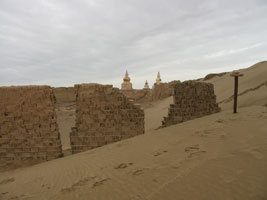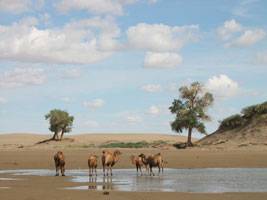|









 

|

Khara Khoto, as a strategic point and communications hub, was a city of great historical importance during the Tangut-Xia and Mongol-Yuan periods. Since the beginning of last century, a great number of precious manuscripts in various languages such as Chinese, Tangut, Mongol, Tibetan, Persian and Arabic have been found in Khara Khoto. They have constituted the basis for modern Tangut studies. However, the value of Khara Khoto manuscripts is not yet fully recognized. The impact of Khara Khoto manuscripts to Central Eurasian studies can yet not compare with that of Dunhuang manuscripts. More over, Khara Khoto becomes an arid area nowadays. Its prosperity and decline closely intertwined with ups and downs of the black water river caused by the climate changes of the earth. No efficient investigations into the relationship of Khara Khoto to its natural environment have yet been undertaken. This symposium is aimed at gaining a new understanding of Khara Khoto through comprehensive studies of the history of Khara Khoto in the perspectives of the relationship between human activities and natural environment. It is our sincere hope that the significance of Khara Khoto for the entire central Eurasian studies will be fully appreciated as that of Dunhuang through our cooperative endeavor.
 
|

